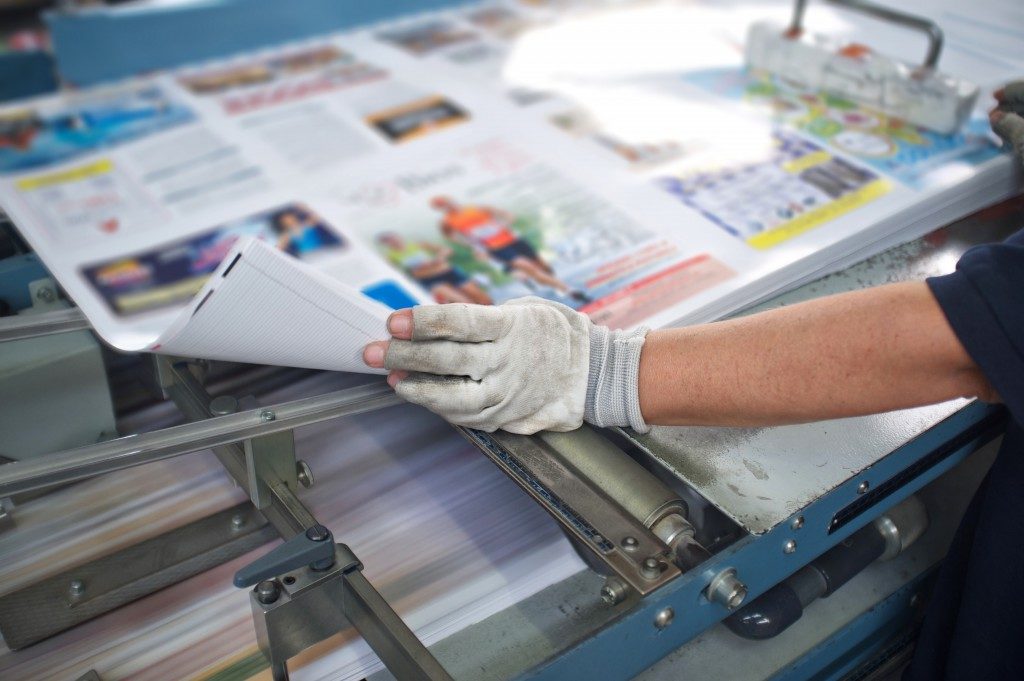Digital marketing has enjoyed significant growth over the past few years. As of 2018, marketers in the United Kingdom have spent 62.6 per cent of total media ad spending on digital channels. Businesses are expected to spend more than double the amount on digital media over television and other traditional advertising.
With technology taking over the advertising industry, some companies have dismissed print as out-of-date. However, magazines and direct mail marketing methods like brochures and flyers continue to be a staple in many businesses.
Why Print Still Matters
Although several businesses are transitioning to digital advertising, some marketing experts are quick to highlight the continuing importance of print as a marketing tool. This medium of advertising continues to have an effect on consumers for two main reasons:
Print is more trustworthy
Printed materials – particularly magazines – continue to be the most reliable source of information. In 2018, UK communications regulator, Ofcom, studied how adults and 12- to 15-year-olds consumed news across different channels and discovered that 80 per cent of people deemed magazines as a reliable source of information. For businesses, print is a way to develop trust they’ve already established with their customers.
Printed messages last longer
Marketing channels like email and social media allow faster delivery of a business’ message. However, the Internet is also prone to spam, pop-ups and other messages that cause people to ignore the content altogether.
Printed materials may be thrown away, but they leave a longer impression on people when they stay on customers’ counters. Scientists also discovered that people remember messages from printed materials longer than digital ones because of the tactile experience of reading.
Integrating Digital and Print Advertising
Even though digital marketing has taken over the advertising industry, it does not mean that it’s more effective than print, or vice versa. The effectiveness of these platforms depends on the campaign, which derives from the nature of the business and the products advertised.
Digital and print strategies also complement each other, and taking an omnichannel approach allows you to reach a broader audience. Here’s how you can balance your exposure for both types of advertising:
Using QR codes

QR codes make it easy for you to build bridges between your printed marketing to the online space. Using their smartphones, consumers can scan the code printed from the brochure or flyer, which directs them to your website.
Adding calls to action
Printed marketing materials used to be passive and were designed primarily to raise awareness of a brand. Adding calls to action (CTAs) into brochures, flyers and business cards encourages customers to visit your website or social media page for more information and exclusive offers.
Include digital opt-ins to marketing materials
Some people prefer reading on websites because it’s more convenient, while others opt for physical magazines because of the tangibility. Give customers a choice by adding digital opt-ins to printed materials. At the same time, ask the ones subscribed to your email list if they want magazines, brochures or flyers delivered to their doorsteps.
Personalising your printed materials
Personalisation allows you to improve your connection with the consumer. Using data from email subscriptions, you can send personalised letters, greeting cards and other direct mail freebies to make the customer feel special.
In many cases, budget lines for print advertising may not be as large as its digital counterpart, but print continues to encourage customers to take action, whether it’s purchasing a product or getting more information. By understanding that print complements digital, you can use the strengths of both methods to get the best results from your campaign.

